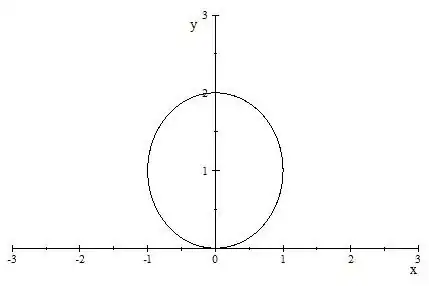$\bf\sf37.$ Evaluate $\iiint_E z\,dV,$ where $E$ lies above the paraboloid $z=x^2+y^2$ and below the plane $z=2y.$
In cylindrical coordinates the paraboloid is given by $z=r^2$ and the plane by $z=2r\sin\theta$ and they intersect in the circle $r=2\sin\theta$. Then $\iiint_E z\,dV=\int_0^\pi\int_0^{2r\sin\theta}rz\,dz\,dr\,d\theta=\tfrac{5\pi}6.$ [using a CAS]
The solution claims that the domain of integration $= \{ \, 0 \le \theta \le \color{red}{ \pi }, 0 \le r \le 2\sin\theta, r^2 \le z \le 2r \sin\theta \, \} $. Why isn’t the upper bound on $\theta$: $\color{red}{ 2 \pi } $?
$1.$ I know $ x^2 + y^2 = 2y \iff r = 2\sin\theta$. But how does this become the upper bound on $r$?
$2.$ Conforming to the solution, the projection (onto $z=0$) of the intersection of paraboloid and plane $= x^2 + y^2 = 2y \iff x^2 + (y - 1)^2 = 1$, a circle of radius 1 centered at $(0, 1)$.
Aren’t we concerned with this entire circle?
I tried to plot this: https://mathematica.stackexchange.com/q/45059/9983
